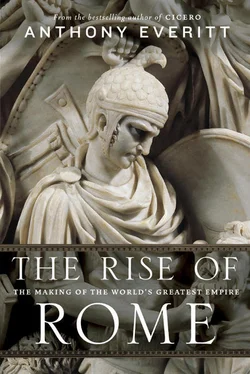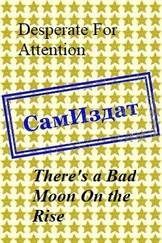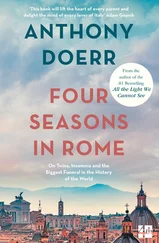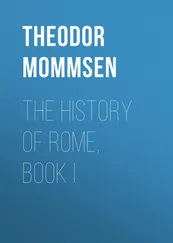The embassy then crossed the frontier and the pater patratus repeated the formula to the first (presumably somewhat startled) person he met, and again at the state’s city gates, and one final time in the marketplace. If his demands were not conceded within thirty days, he proceeded to a formal declaration of war, calling on not only the leader of the gods but on the god of gates and doorways, of beginnings and endings: “Hear, Jupiter; hear, Janus Quirinus; hear, all you gods in heaven, on the earth and under the earth: I call you to witness that the people of So-and-So are unjust and refuse reparation. But concerning these things we will consult the elders of our country, how we may obtain our due.”
If their complaint was not accepted, the envoys returned home and discussed the position with the Senate. Each member was asked his view and, typically, replied, “I hold that these things be sought by means of just and righteous war. Thus I give my vote and my consent.” If a majority agreed, then one of the fetiales returned to the enemy frontier and formally declared war. He flung a spear across the frontier as a sign that hostilities had begun.
In later years, with the enlargement of Rome’s territory this procedure became increasingly difficult to apply. A piece of land was therefore acquired in the city which was symbolically designated as hostile soil and into which the spear could be thrown. A specially appointed senator replaced the fetiales . But the principle of ensuring that a war was just remained obligatory, at least in theory.
Ancus Marcius was also responsible for enlarging the city by bringing two hills inside its boundary, the Aventine and the Caelian. He founded the port of Ostia, at the mouth of the Tiber, a clear sign that Rome was developing trade.
The tiny settlement on the Palatine Hill was beginning to find its feet.
3

Expulsion
NORTH OF ROME LIVED A MYSTERIOUS AND HIGHLY cultivated race. These were the Etruscans and their homeland, Etruria, occupied, roughly speaking, modern Tuscany. They first appeared on the scene between 900 and 800 B.C. Their language used a form of Greek script, but it was not an Indo-European tongue, as in most Mediterranean and Middle Eastern societies, and has not yet been fully deciphered. To this day, its origin is unknown.
In fact, it is still not altogether clear whence the Etruscans themselves originated. Some said they came from Lydia, a kingdom on the Turkish coast (where later, in the sixth century, Croesus ruled, a byword for enormous wealth), and were led by the king’s son, Tyrrhenus. The Greek for Etruscan is Tyrrhenian. This account is perfectly plausible; for hundreds of years, the Italian peninsula was an archaic America, a new world open to successive waves of colonists. Enterprising Phoenician and Greek traders patrolled the seas looking for business. Aristocrats saw themselves as an international class and networked with one another across state borders. There is no particular reason that a force of Lydians (or, more generally, Asiatics) should not have invaded Italy—in much the same way that Duke William and his handful of Norman knights expropriated Anglo-Saxon England.
It is tempting to envisage a melting pot in which the native population was enriched by Greek and Phoenician aesthetic styles, new techniques in metalworking, and a sophisticated knowledge of town planning. However, modern scholars have been more skeptical, supposing the slow indigenous development of a community of villages into a loose federation of small city-states. Others have thrown up their hands and walked away from the debate, seeing the question as being on a par with the name of Hecuba’s mother—“neither capable of being known nor worth knowing.”
One way or another, by the eighth century the Etruscans had graduated from being simple farmers into an urban society of merchants and craftspeople. They were organized as a federation and each of their city-states was ruled by a king, or lauchme , who governed with much pomp, donning a purple robe and a gold crown. He was attended by servants, who carried fasces , bundles of rods tied around a one-headed ax. The Etruscans were militarily active and built up a sizable empire in central and northern Italy that reached Bononia (today’s Bologna) in the north and parts of Campania in the south. Rome seems to have retained its independence, however, although much influenced by Etruscan art and architecture, and, above all, by its religious practices.
According to Livy, Etruscans, “deeply learned as they were in sacred lore of all kinds, were more concerned than any other nation with religious matters.” Their doctrines were set out in a series of books much used by their disciples at Rome, called Etrusca disciplina ( The Etruscan System ); these covered such topics as the scrutiny of the entrails of animals, the interpretation of thunder and lightning, and “rules concerning the founding of cities, the consecration of altars and temples, the inviolability of ramparts, the laws relating to city gates, the division into tribes, curiae and centuriae , and all other things of this nature concerning war and peace.”
Inside every ordinary object or event lay a secret and sacred meaning. It followed that the world was a forest of symbols. The most innocent animals or plants concealed unexpected threats or promises. So, for instance, some kinds of tree were ill-wishing and flourished under the protection of the underworld powers. The eglantine, the fern, the wild pear, the black fig, and any bush that produced black fruits or berries had to be rooted out and destroyed as soon as they were seen to sprout. By contrast, the laurel brought good fortune. The dreams of pregnant women could foretell triumph or disaster, as could eccentricities in the internal organs of sacrificed animals. A model bronze liver has been found divided into forty-four areas, marked with the names of the gods, showing the place allotted to each god in the Etruscan cosmos. Celestial phenomena required particular attention. Storms, rain (especially if of an unusual color or consistency), comets, and the flights of birds and bees all called for careful study and required expert interpretation. Etruscan nobles were trained as haruspices , or diviners, and were much in demand in Rome throughout most of its history.
The Etruscans laid out their cemeteries as well as their towns in orderly grids. In their heyday, the tombs of the rich were reconstructions of the houses they lived in when alive, containing corridors and rooms. All kinds of household objects were stored in them. In the burial chamber of one great lady, archaeologists found
gold ornaments, little toilet vases for oil and perfumes, pyxides [round boxes with separate lids] imitating wooden coffers for keeping small objects in: all things which could only have been dedicated to a woman for a life beyond the tomb. But together with these objects were indispensable kitchen utensils: andirons [metal supports for fire logs] and spits, a cauldron with a tripod to support it; finally a whole dinner service, the very one which had been used for the funeral feast in honor of the deceased: jugs, amphorae [two-handled jars for storing wine or oil], vases for drawing water or for mixing liquids, drinking cups and dinner plates.
Bright-colored frescoes on tomb walls illustrate the daily life of the Etruscans. Although these sometimes depict frightening demons of the underworld, they mostly evoke with beguiling joie de vivre all manner of humane fun—banquets, young men dancing and making music, horse racing, fishing, wrestling, and other athletics.
Читать дальше









